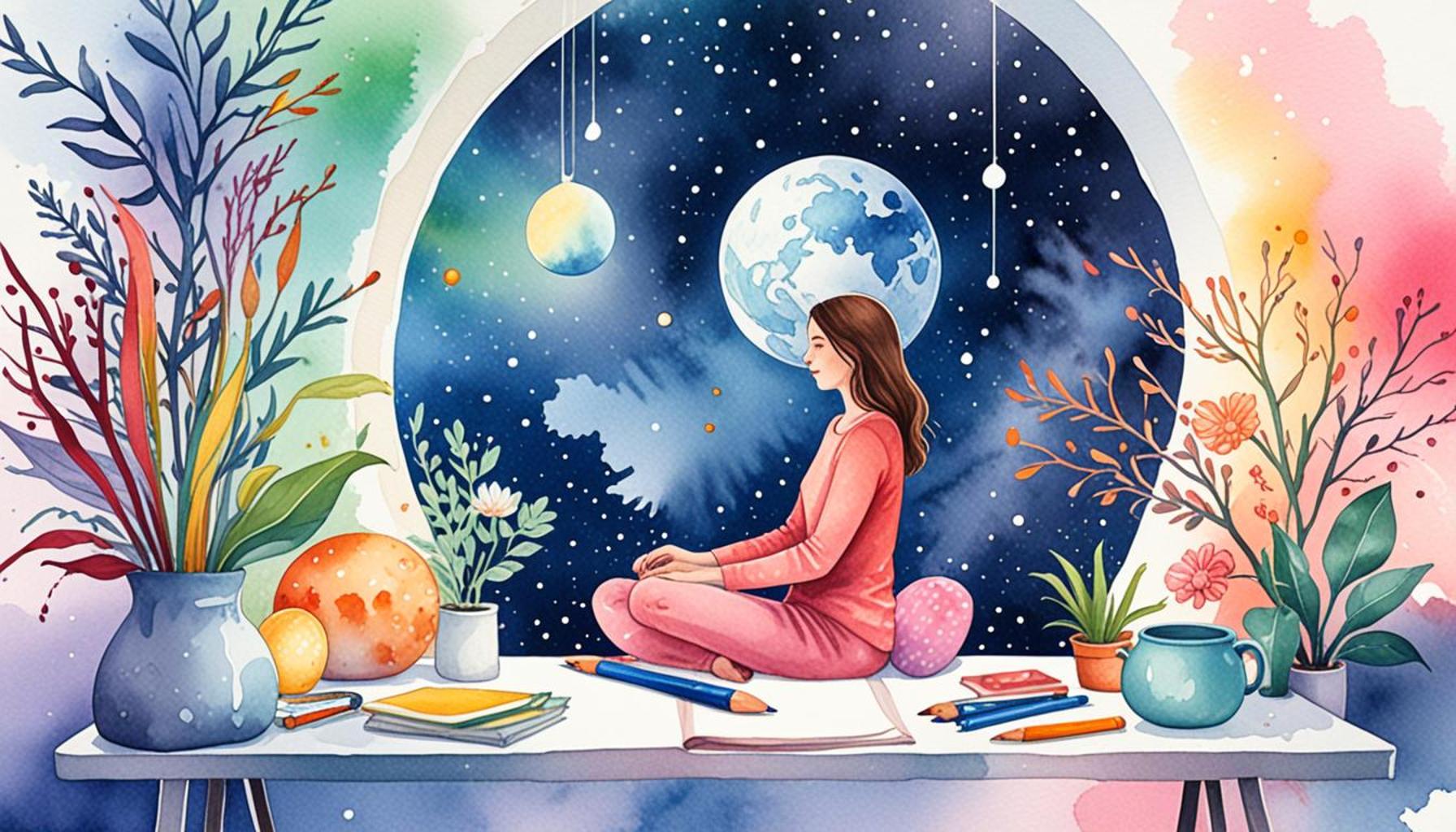Creating Calm Environments: The Influence of Space Optimization on Mental Health

The Impact of Space Design on Mental Health
Our modern lifestyles are often dominated by the speed at which we function, which can lead to overwhelming feelings of stress and anxiety. As a result, the design of our personal and professional spaces has taken on a new level of importance. The way we arrange, decorate, and maintain our environments can deeply influence our mental state, impacting everything from our mood to our productivity levels.
One key aspect of space optimization is light and color. Exposure to natural sunlight has been shown to enhance mood and mental clarity. Research indicates that workplaces with abundant natural light can boost productivity by up to 15%. Furthermore, color psychology suggests that certain colors can create specific emotional responses. For instance, blue tones can evoke feelings of calm and tranquility, while yellows are often associated with optimism and creativity. Choosing the right palette for your space, whether it’s a home office or a living room, can significantly influence your daily experiences.
Another important principle is clutter reduction. The minimalist movement, which emphasizes simplicity and functionality, is more than just an aesthetic choice; it’s a lifestyle that can lead to improved mental clarity. Studies have shown that individuals who engage in decluttering experience lower levels of stress and anxiety. A well-organized space not only helps in fostering a sense of control but also encourages focus. For example, digital decluttering—organizing your desktop and files—has been found to enhance productivity, allowing individuals to concentrate better on their tasks without distractions.
Additionally, the concept of nature integration into our environments can significantly improve emotional well-being. Biophilic design emphasizes the connection between humans and nature, encouraging the inclusion of natural elements indoors. Research has proven that incorporating plants and natural materials can lower blood pressure, reduce stress, and foster feelings of tranquility. Simple additions like a few indoor plants or natural wood furniture can transform a sterile office into a serene workspace, fostering creativity and emotional stability.
As we uncover the connection between space design and mental health, it becomes evident that conscious choices in our surroundings can cultivate emotional resilience. Whether it’s through enhancing natural light, reducing clutter, or bringing in elements of nature, optimizing our spaces fosters a sense of peace and control. By exploring these principles, individuals can transform not only their homes and workplaces but also contribute to a broader culture of well-being that prioritizes mental health in both personal and communal environments. This enhanced understanding invites us to rethink how we interact with our spaces, making mindful adjustments that ultimately lead to greater satisfaction and happiness in our daily lives.
DISCOVER MORE: Click here to dive deeper
Understanding the Connection: Key Elements of Space Optimization
Creating calm environments is not merely about aesthetics; it is a strategic approach to enhancing mental health through thoughtful space optimization. By understanding the fundamental elements that contribute to a harmonious space, individuals can craft environments that support emotional well-being and alleviate stress. Here are some pivotal factors to consider:
- Acoustic Treatment: Noise pollution is a prevalent issue in urban areas, with studies indicating that excessive noise can contribute to heightened stress and anxiety levels. Implementing soundproofing techniques, such as acoustic panels or heavy drapery, can help create a tranquil atmosphere. The right sound environment promotes concentration and may enhance the overall workflow in professional settings.
- Furniture Layout: The way furniture is arranged can significantly affect how we interact within a space. Open layouts encourage collaboration, while cozy nooks can facilitate relaxation. Ensuring that furniture allows for fluid movement and comfort can make a space feel more inviting and reduce feelings of claustrophobia or anxiety.
- Personal Touches: Personalization plays a major role in making a space feel truly yours. Incorporating photographs, art, or meaningful objects fosters a sense of belonging and comfort. This connection to one’s environment can enhance the emotional resonance of a space, leading to improved mood and mental health.
Another important factor in space optimization is ergonomics. The way we design workspaces can have profound implications for our physical and mental health. Ergonomically designed furniture, which supports proper posture, can reduce physical strain and discomfort. This, in turn, allows individuals to concentrate better and minimizes distractions that may arise from discomfort. A well-thought-out desk setup can lead to higher productivity levels and a healthier work-life balance.
Moreover, the element of flexibility in space design cannot be overlooked. Adaptable spaces that can be adjusted based on individual needs promote a sense of control. This aspect is especially significant in workplaces, where employees can benefit from varying environments that cater to focused work, collaboration, or relaxation. A diverse setting encourages creativity and helps individuals cope with the demands of their day-to-day tasks.
As these key elements come together, they highlight the importance of intentional design choices in fostering mental well-being. By optimizing our spaces through careful consideration of acoustic treatment, furniture layout, personalization, ergonomics, and flexibility, we can create sanctuaries that nurture our mental health. In the quest for calm environments, it becomes evident that a holistic approach incorporating these principles can lead to transformative effects on our emotional landscape.
Understanding Space Optimization
Space optimization plays a crucial role in creating calm environments that significantly affect mental health. By intelligently arranging and utilizing space, individuals can experience enhanced tranquility, improved focus, and reduced stress levels. A well-structured environment minimizes distractions and creates a sense of order, which is fundamental for mental clarity. Scientific studies suggest that organized spaces can lead to lower cortisol levels, the stress hormone, allowing individuals to navigate their daily challenges with greater ease.
The Role of Natural Light
Incorporating natural light into space designs fosters a connection with the outdoors, subsequently enhancing mood and wellbeing. Exposure to sunlight has been linked to increased serotonin production, which stabilizes mood and creates feelings of happiness. Interestingly, environmental psychologists advocate for designs that promote natural light intake through larger windows or open spaces, which not only beautifies a space but also nurtures mental health.
Color Psychology in Space Design
Colors within a space can dramatically affect our emotions. Soft, muted tones like blues and greens are known to evoke calmness and relaxation, while brighter colors can energize and invigorate a person’s mood. Understanding color psychology is essential in creating an environment that caters to mental health needs, making it imperative for designers and individuals alike to consider the impact of color choices in their environments.
Incorporating Nature
Bringing elements of nature into our living or working spaces—such as plants, water features, or natural materials—can also be immensely beneficial. Biophilic design, which aims to connect humans with nature, has been shown to reduce stress and enhance overall mental health. This design principle encourages space utilization that embraces organic shapes and materials, promoting a sense of peace and belonging.
| Category | Description |
|---|---|
| Natural Light | Promotes well-being and boosts mood through serotonin production. |
| Color Psychology | Utilizes colors to evoke emotions and alter mental states for better health. |
| Biophilic Design | Integrates nature into spaces, enhancing calmness and reducing stress. |
Ultimately, the way we optimize our spaces can have lasting effects on our mental health. The design choices we make—considering elements like light, color, and natural integration—can either impede or enhance our sense of peace. Exploring these elements opens new avenues for improving mental wellness in our everyday environments.
DIVE DEEPER: Click here to learn how mindful consumption can enhance sustainability
Biophilic Design: Nature’s Role in Enhancing Mental Well-Being
In recent years, the concept of biophilic design has gained momentum as an influential aspect of space optimization. At its core, biophilic design aims to create a strong connection between individuals and nature, which can significantly impact mental health. Integrating natural elements such as indoor plants, natural light, and water features not only beautifies a space but also contributes to a calming atmosphere. Research has demonstrated that exposure to nature can reduce stress, enhance mood, and improve cognitive function.
For instance, studies have shown that workplaces incorporating indoor greenery can lead to a 47% reduction in anxiety levels and a 36% reduction in overall workplace stress. Employees with access to natural light and greenery report higher job satisfaction and increased productivity. Hence, organizations and home designers are increasingly prioritizing the inclusion of plants, living walls, or large windows that maximize daylight to nurture both physical and mental well-being.
The Color Palette: Psychological Impacts of Colors in Space
The colors chosen for a space can evoke powerful emotions and influence psychological states. Warm colors such as reds and oranges can energize and stimulate, while cool colors like blues and greens promote calm and relaxation. Understanding the psychology behind color can guide individuals in selecting a color palette that fosters a positive emotional response in any given environment.
- Blue: Known for its calming effects, blue encourages tranquility and reduces feelings of anxiety.
- Green: The color of nature, green represents balance and harmony, which can contribute to a sense of renewal and peace.
- Yellow: Associated with happiness and optimism, yellows can invigorate spaces that require energy and creativity.
Designers and mental health experts recommend considering the emotional ramifications of color choices in any space, from homes to therapy offices. A blue-toned room can create a serene retreat for relaxation, while a vibrant yellow playroom can stimulate creativity and joy.
Lighting: A Foundational Element of Mental Clarity
Lighting plays a critical role in shaping our experiences within a space. Natural light has been shown to have profound benefits on mood and productivity. Exposure to sunlight stimulates serotonin production, which can enhance feelings of happiness and ward off depression. Conversely, inadequate lighting can lead to increased fatigue and even seasonal affective disorder (SAD), demonstrating the importance of lighting in our environments.
To create calm environments, it is essential to incorporate both natural and artificial lighting effectively. Strategically placed windows and the use of light-diffusing curtains can maximize daylight exposure in homes and workplaces. Additionally, employing adaptable lighting solutions, such as lamps with adjustable settings, allows individuals to tailor the intensity of light to their current needs—bright for focus and dim for relaxation.
Conclusion: Reimagining Spaces for Mental Resilience
As people continue to recognize the link between space optimization and mental health, it becomes clear that the intricate balance of elements such as biophilic design, color choices, and lighting can foster resilience and tranquility. Creating calm environments is not a luxury but an essential aspect of nurturing mental well-being, enhancing quality of life, and promoting overall health.
DISCOVER MORE: Click here to boost your productivity
Conclusion: Reimagining Spaces for Mental Resilience
In an era where mental health is increasingly prioritized, the significance of space optimization in fostering calm environments cannot be overstated. By integrating principles of biophilic design, mindful color palettes, and strategic lighting solutions, we can profoundly impact emotional well-being. The evidence is clear—places that embrace natural elements, soothing colors, and optimal light diminish anxiety, enhance mood, and promote cognitive clarity.
To further engage with this notion, consider how our homes, workplaces, and public spaces can be transformed into sanctuaries that support mental health. Whether it’s incorporating indoor gardens to bring nature closer or utilizing soft blues and greens to cultivate serenity, each design choice plays a crucial role. Furthermore, the adaptability of lighting not only illuminates our physical surroundings but also nourishes our mental states, reflecting the duality of function and tranquility in design.
As society advances, it is imperative for architects, designers, and organizations to collaborate in creating environments that are not merely functional but also restorative. By doing so, we not only enhance our own quality of life but also set a precedent for future generations to prioritize well-being in every aspect of their living and working spaces. As we embrace these principles, let us not forget the powerful connection between our environments and our mental resilience, urging us to create sanctuaries that nourish the mind, body, and spirit alike.


